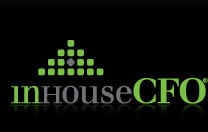I only needed to look at all the tabs that I had open on my Browser this morning to figure out what I was focused on last week. INBOUND MARKETING. I’d like to share what I’ve discovered, in the context of small to medium-sized businesses (“SMB’s”).
WIKIPEDIA DEFINITION
As a place to start, Wikipedia gives us a great definition:
A newer model (for the definition of Inbound Marketing) illustrates the concept in five stages:[7]
- Attract traffic;
- Convert visitors to leads;
- Convert leads to sales;
- Turn customers into repeat higher margin customers; and
- Analyze for continuous improvement.
Complex inbound marketing practices target potential customers at various different levels of product/brand awareness. The most scaled tactics attempt to funnel customers from semantically related market segments, who have no product awareness or intention to purchase. This is usually achieved by taking the customer through a structured informational path that builds awareness and increases interest over time.
Interestingly enough, the Wikipedia page for Inbound Marketing also refers the Reader to “CONTENT MARKETING”. For our purposes, as an Advisor to SME’s, these two phrases are one and the same.
THE STAGE IS NOW SET
So, from our perspective here at InHouseCFO Inc., this definition allows any SME to determine the extent it needs, or wants to get involved in this, how it will do so, and what tool it should use to get the best results.
We’ll discuss each stage as they apply to those types of businesses.
1. ATTRACT TRAFFIC
This can be done a number of ways, both online and otherwise:
- Signage, networking, speaking engagements, traditional advertising, are all examples of non-online methods; and
- Social media activities, paid online advertising, search engine optimizing, references and links from other sites, are all examples of online methods.
One thing that’s certain, getting noticed “ain’t just placing an ad in the newspaper anymore”.
Consider the following statistic pulled from a very informative infographic from Demand Metric:

This, in concert with the other metric that over 80% of all purchase decisions (Consumer and Business) are now made AFTER online research has been done, we have compelling evidence that attracting traffic is most effective when it involves online interactions. This means all traditional awareness campaigns should always drive traffic to a business’ online information.
2. CONVERT TRAFFIC TO LEADS
The above info-graphic says it all, to convert traffic, give visitors content that informs, then ask who they are, and give them something for letting you know. Not only will your opportunities increase, but also they’ll be much warmer to your “pitch”.
3. CONVERT LEADS TO SALES
In one of our sessions last week with one of the leading provider of Inbound Marketing tools – HUBSPOT”, the term “Shmarketing” was used, meaning that sales and marketing are in fact meshed together these days in the most effective of processes. It follows then that lead-to-sales conversions actually occur best when done through a continuation of the provision of quality informative content to the prospect in a means that they prefer. Obviously this content will be adjusted to reflect the stage that the customer or prospective customer is in their decision making process.
4. CREATE REPEAT CUSTOMERS
To repeat, this process is merely a continuation of the Shmarketing process described above. Of course an added feature is a stellar customer experience surrounding the first and ongoing sales.
This process would included treating customer as a new lead in situations where new products or services are launched, or that we’ve identified them perhaps as a great candidate for products and services which we already provide that they have not as yet availed themselves.
5. ANALYZE
As numbers professionals, dear to our heart is the 5th Stage, ANALYZE. The combination of Cloud-Computing, and the introduction of very robust but affordable tools like SharpSpring, HubSpot, MethodCRM, Salesforce, Xero, and QuickbooksOnline, enable any size of business to evaluate what is and isn’t working on a real-time basis, resulting in increased sales at lower cost per sale – the very definition of ROI, the one key metric (“KPI”) that we require all of our clients to be anal about measuring.
As we've noted in other Blog posts, Big Data, and Using the Cloud, the game has changed, and owners of small businesses in Canada need to embrace and adopt how customers are now being obtained and retained, and be concious of the new competitive marketplace. This is underscored by Scott Anthony, the author of The Little Black Book of Innovation, recently wrote in the Harvard Business Review that "we’ve entered the fourth era of innovation, where start-ups and established companies alike compete for the same customers using the same low-cost online tools and global talent". FSN goes on to state that "It seems that the CFO’s analytical skills are going to be in great demand whatever the size of organization. The common thread is that technology (cloud, big data and social) in most industries is more central to competitiveness than ever before and it’s the organizations that recognise this change that are going to appreciate tech-savvy CFOs the most."
dmc
(Don Cameron is the Managing Director of InHouseCFO Inc., a consulting business dedicated to ensuring that growing business' and their Founders succeed by focussing on their business processes and disciplines, results measurement and management, and the appropriate investment of their hard earned wealth. He can be reached at donc@inhousecfo.com)

